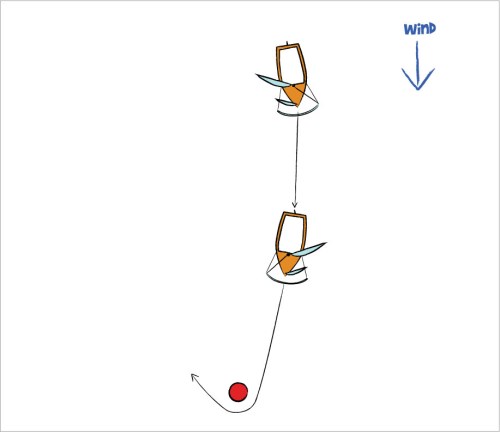Introduction to Symmetric Spinnakers
Go To: Sailing - Techniques and Manoevres
Posted on 31 March 2009 18:38
Symmetric spinnakers are used to sail down wind and are made with a very full shape and large belly to act like a kite to catch the wind, hence their nick name “sailing the kite”.
The shape of the sail is controlled by rope/lines attached to each corner; the halyard attached to the head to hoist the sail, and two clews at the bottom corners.
The lines attached to the clews are known as sheets although the one attached to the windward clew is known as the guy; although it is symmetrical the sail does set more towards the leeward side. Although no corners of the sail are attached to spars you do need a spinnaker pole which extends the clew away from the boat to help give the sail its shape, the pole is clipped on to the guy at one end and the mast at the other, and is controlled by an up haul and down haul, what makes symmetric spinnakers harder to use is the pole as it has to be changed side during gybing and complicates launching and retrieving.
Symmetric spinnakers are harder to master than asymmetric ones – chiefly due to the more difficult rigging. Newer designs of boats use chutes to launch the spinnaker, but most older designs will require the spinnaker to be packed or “doused” into a bag or bundled into the cockpit. It’s first packed into this bag for launching, and then pulled out during launching; while it’s being hoisted, the pole must be attached first to the one clew, and then to the mast, as the spinnaker goes up.
When the boat needs to gybe, the spinnaker pole must be unclipped from the one clew, and reclipped back onto the other clew – otherwise the spinnaker gets trapped on the wrong side of the boat.
When it finally comes time to drop, the pole must be detached, and the spinnaker pulled down, and pulled into the chute, or packed into the bag ready for launching next time – without getting it all tangled up.

Sailing downwind with a symmetric spinnaker
The best course to sail on with a symmetric spinnaker is a training run – if you sail dead downwind, the boat will have a tendency to be twitchy and gybe frequently, which you don’t want with a spinnaker up! However, the extra speed gained from the extra sail area should more than compensate for the slightly off course you need to take.